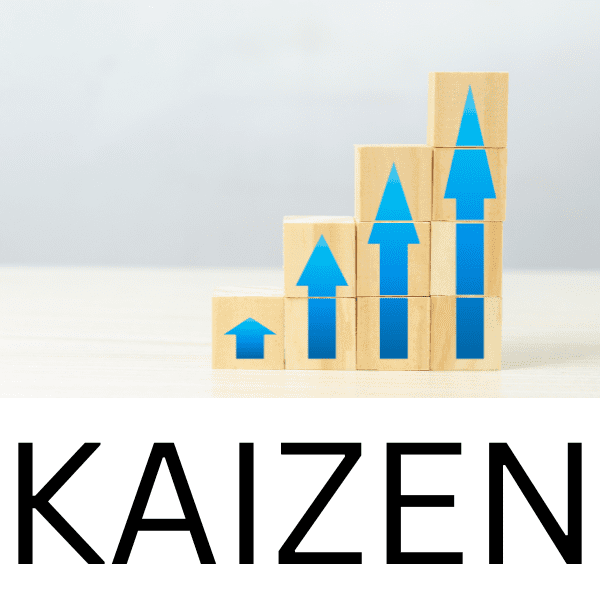Contents
Toggle
In today’s dynamic business world, companies need to be adaptable to thrive. Cultivating a lean culture is key to achieving this agility.
A lean culture prioritizes efficiency and waste reduction through Lean implementation, a process that incorporates Lean concepts and Lean tools.
This goes beyond just cost-cutting; it’s a Lean transformation that creates a more responsive organization with a strong focus on the customer. This approach fosters a Learning culture where continuous improvement is embraced by People and Lean become intertwined.
Employees at all levels are empowered to identify and eliminate waste, leading to increased efficiency, improved innovation, and enhanced customer satisfaction. Building a lean culture is a journey that requires Leadership commitment to Lean principles. By empowering employees, fostering continuous improvement through open communication, and measuring progress with clear metrics, you can create a foundation for long-term success.
But how do you cultivate an organization that prioritizes a lean culture? Let’s take a closer look.
What is a Lean Culture?
Lean management goes beyond simply prioritizing efficiency and waste reduction. It fosters a culture of continuous improvement, where employees at every level are empowered to identify and eliminate roadblocks.
This includes unnecessary processes, bureaucracy, and anything that stands in the way of creating value for the customer. But it’s not just about the bottom line. Lean principles, like respect for people and leading with humility, create a foundation of cultural enablers.
This, in turn, allows for enterprise alignment. Employees think systemically, understanding how their actions impact the bigger picture. This focus on constancy of purpose ensures everyone is working towards the same goal: creating value for the customer.
Building a Lean Culture is about creating an environment where results are achieved through a collaborative spirit and a focus on what truly matters: the customer.
Why Should You Care about a Lean Culture?
Here’s why building a lean culture should be a top priority for your organization:
Increased Efficiency:
Lean processes eliminate waste, leading to faster turnaround times and reduced costs.
Improved Innovation:
A lean culture that encourages continuous improvement creates an environment where employees feel empowered to experiment and find new ways of doing things.
Enhanced Customer Satisfaction:
By focusing on value creation, lean organizations are better equipped to meet customer needs and exceed expectations.
Employee Engagement:
When employees feel like they can make a real difference in streamlining processes, they become more engaged and motivated.
How Do You Build a Lean Culture?
Building a lean culture is not a one-time event; it’s an ongoing journey. Here are some key steps to get you started:
Leadership Commitment:
Senior leadership needs to be fully committed to the lean philosophy. This means not just talking the talk, but also walking the walk. Leaders need to be visible and actively involved in promoting lean principles throughout the organization.
Empowerment:
Give your employees the autonomy and authority to identify and address inefficiencies. This fosters a sense of ownership and accountability, which are crucial for success.
Continuous Improvement:
Make continuous improvement a core value. Encourage employees to constantly look for ways to improve processes and eliminate waste. This can be done through regular brainstorming sessions, process mapping exercises, and employee feedback mechanisms.
Communication and Transparency:
Open communication is essential for building trust and buy-in for lean initiatives. Regularly communicate the company’s goals and progress, and be transparent about challenges and setbacks.
Metrics and Measurement:
Track your progress! Establish key performance indicators (KPIs) to measure the impact of your lean efforts. This will help you identify areas for further improvement and demonstrate the value of the lean approach.
Techniques to Organize a Lean Culture:
Now that we’ve explored the core tenets of a Lean Culture, it’s time to roll up our sleeves and get to work! This section dives deep into practical applications. We’ll take those high-level concepts and show you exactly how to implement them within your organization, transforming them from inspiring ideas into actionable steps for building a thriving Lean environment. Let’s unlock the power of these principles and see how they can be used to empower your employees, streamline your processes, and ultimately, delight your customers.
Company Culture & Organizational Culture:
Cultivate a culture of openness and transparency. Encourage employees to share ideas and concerns freely. Celebrate successes big and small, fostering a sense of shared purpose and continuous improvement.
Poka-Yoke & Waste Elimination:
Implement Poka-Yoke, which translates to “mistake-proofing.” This can involve visual cues or automated checks to prevent errors at the source, drastically reducing waste (anything that doesn’t add value for the customer). Analyze processes to identify and eliminate non-value-adding activities like excessive wait times, overproduction, or unnecessary transportation.
Gemba Walks & Shared Leadership:
Leaders should actively participate in Gemba Walks, which are visits to the “real place” where the work gets done (e.g., production floor, customer service center). Observing firsthand allows leaders to understand challenges and opportunities, fostering shared leadership where everyone feels empowered to contribute to improvements.
Just-In-Time (JIT) & Value Stream Mapping:
Implement Just-In-Time (JIT) inventory management to minimize waste and optimize flow. This requires a deep understanding of your value stream, which can be achieved through value stream mapping. By visualizing the entire process from raw materials to finished product, you can identify opportunities to streamline and eliminate waste.
Hoshin Planning & Kanban Boards:
Use Hoshin planning, a strategic planning process, to deploy your Lean goals throughout the organization. Translate these goals into actionable steps visualized with Kanban boards, a system for managing work in progress (WIP). Kanban boards offer real-time visibility into bottlenecks and allow for adjustments to maintain smooth flow.
Product Development & Value Creation:
Focus product development on creating true value for the customer. Conduct thorough customer research to understand their needs and pain points. Prioritize features that deliver the most value, constantly refining and improving based on customer feedback.
By integrating these practices, you can foster a Lean Culture that thrives on continuous improvement, respect for people, and a relentless pursuit of value creation for your customers. Remember, building a Lean Culture is a journey, not a destination. It requires ongoing commitment from leadership and a willingness to adapt and learn along the way.
Conclusion:
Building a lean culture is an investment that will pay off in the long run. By prioritizing efficiency, empowering your employees, and fostering a culture of continuous improvement, you can create a more agile and responsive organization that is well-positioned for success in today’s competitive marketplace.
Matt Styles
Matt Styles is the founder and voice of The Stylish Leader enterprise. Empowering the next generation of leaders, Matt is focused on challenging minds, inspiring hearts, and helping others achieve their highest potential for success.

- By: Matt Styles
- Date: July 18, 2024
Kaizen: How To Supercharge Your Success
- 3 min read

- By: Matt Styles
- Date: July 15, 2024
Lean Culture 101: How To Organize A Framework That Thrives
- 7 min read

